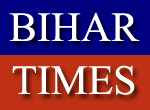|
25/04/2014
After women, it is the media-created myth of first-time voters |
In this age of innumerable 24x7 news channels, glossy and fat newspapers and magazines journalists face the problem of filling time and space. So very often they come up with half-baked hurriedly prepeared analyses. Sometimes in doing so they, consciously or otherwise, end up playing into the hands of one political party or the other. In 2009 and 2010 Lok Sabha and Assembly elections in Bihar the media, without doing any serious research, from the very beginning started attributing this victory of Janata Dal (United)-BJP alliance to the high turn-out of women voters. The argument put forward was that since they turned up in much larger number, they ensured the victory of the ruling NDA. No doubt, women turn-out increased, but this percentage is rising gradually as unlike in 1980s and early 1990s elections are becoming much more safe and less troublesome. But there are several other factors too. In many parts of Bihar, especially rural areas––due to seasonal or near-permanent––migration, the number of women are larger than men. Women are doing a lot of work, not just voting. The old feudal order is gradually crumbling and even women in purdah are turning up to booths. A quarter century back women of many upper castes would not come out from their houses on the election day. But that has since been changing. Besides, reaching the booth has become much easier due to improvement in road and communication system. Even the remotest booths do not appear so remote now, though things need to be improved more. Let us take the example of women shareroppers in several north Bihar districts. This practice started way back in 1990s. Viji Srinivasan of Adithi, an NGO, did a very good work on it about two decades back. As the male-folk start migrating to Punjab, Haryana and west Uttar Pradesh quite early in summer it is the women who undertake work to broadcast seeds and do transplanting work. For this they take some help of local labourers––if required. As harvesting in the west Indian states are concluded earlier the seasonal migrant labours start returning by October and take part in harvesting work back home. Similarly, a large number of labours working in woolen and realted garment industries go to Punjab in early winter leaving many works back home to the women-folk. So if the percentage of women voters are rising it has little to do with incumbency or anti-incumbency factors. It is not that women in general votes differently in Bihar than men. So just the high turn-out of women voters has little to do with the victory of NDA then. The truth is that in those two elections both the genders voted for the NDA and rejected the RJD-LJP alliance and the Congress. Similarly, this time the national as well as the regional media are full of stories of first time voters––that is between the age group of 18 and 22. The stories are being given such a twist as if all these first-time voters would vote for the BJP. This is simply not the case. In majority of case the first-time voters are not voting differently from their parents. Yes, they are more active in social media, but then to say that they think more maturedly than the generation of their parents is sheer exaggeration. In fact this is the best way to befool them. The truth is that today’s 18-22 years age group youths in India are, in some respect, politically less mature and can not be expected to bring about any big change all alone and without the consent of their parents. If they are voting for any particular party they are doing so with the consensus developed in the family––and not voting on their own. An empirical study may reveal that today’s 18-22 years age group youths are perhaps less politically mature than what they used to be during the JP or Navnirman movements days in Bihar or Gujarat respectively in 1974. This is so in spite of the fact that, unlike in the past, all students are taught Social Sciences till Class-X now. Mind it the voting age was 21 years till mid-1980s. True today’s youth have much more information at hand, but than not all of them want to have access to serious one. As information technology medium has become a source of entertainment they have a lot more things to do with the internet, mobile phones and all that. These youths can be carried away by short slogans and want immediate results. This is a very dangerous trend. Today’s youth, especially urban, are much bothered about one’s own change rather than change in society. That is why any attempt to mobilise the youths for some revolutionary change is not yielding result. True they gathered in Delhi during Anna Hazare’s 12 days old fast as the media highlighted it 24x7, but the same movement ended in disaster in Mumbai for obvious reasons. Was this just a media-driven show. Perhaps? |


